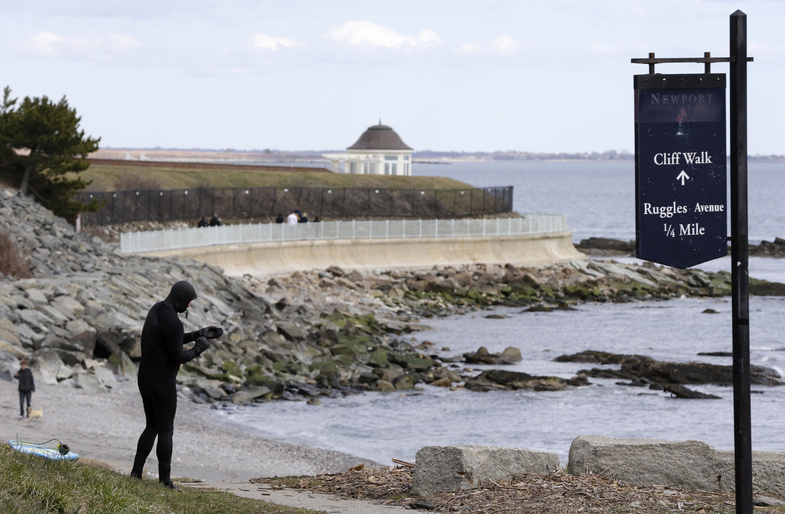PROVIDENCE, R.I. — A storm that blew through earlier this month might have triggered a rare phenomenon for the East Coast: a tsunami.
Tsunami-like conditions were observed June 13 at more than 30 tide gauges along the East Coast, Bermuda and Puerto Rico, the National Oceanic and Atmospheric Administration said. The highest peak amplitude was recorded in Newport, R.I, where it reached just under a foot above sea level. Gauges in Kiptopeke, Va., and Atlantic City, N.J., recorded similar peaks, according to NOAA.
“From North Carolina up through Massachusetts, we can find that signal, even though it’s very small, which tells us there was something going on,” Mike Angove, head of NOAA’s tsunami program, said Tuesday. “We’re trying to piece this back together.”
A strong storm moved through the region and offshore that day, and scientists were trying to determine if it played a role.
Angove stopped short of saying it was a tsunami, but acknowledged it had specific characteristics of one. NOAA’s West Coast/Alaska Tsunami Warning Center posted a statement calling it a tsunami.
Brian Coen was spearfishing at Barnegat Inlet in Ocean County, N.J., around 3:30 p.m. on June 13, when he saw a strong outrush of water as the tide went out, according to a description provided by NOAA. He said it carried divers over submerged rocks that serve as a breakwater. The rocks, normally 3 to 4 feet under water, eventually were exposed, he said.
Then, according to NOAA, Coen saw an approximately 6-foot wave come in. It carried the divers back over the breakwater and also swept three people off rocks that are usually 5 to 6 feet above sea level. Two of them needed medical attention.
Chuck Ebersole, steward at Wickford Yacht Club in North Kingstown, R.I., said he saw a strong current of about 7 knots, or 8 mph, going out through a channel into Narragansett Bay. Normally, he said, the current is 1 to 2 mph. The current was so strong that one large boat pulled its cleat out of the dock, he said.
After a while, the current reversed at the same speed, he said. A nearby gauge recorded that the sea level changed by 1.3 feet.
Angove said it is a specific feature of tsunamis for water to be drawn out to sea and then rapidly rush back in, and the water speeds Ebersole reported in Rhode Island indicated something other than a storm surge.
He said researchers are looking for a cause. One possibility is a rare meteotsunami, which is a tsunami caused by weather. Or it could have been caused by a landslide off the continental shelf, which is less rare but still uncommon, he said.
Angove hopes to send a boat with sonar out to the shelf to look for a landslide and help determine what happened.
“If we can’t do that, it’s going to be tough to put this egg back together,” he said.
At the yacht club, there was only minor damage to the dock and two boats, Ebersole said.
“For a little while there, I thought it might have been some runoff from the storms we had that week, but it was too much water for that,” he said. “It was very exciting at the time.”
Send questions/comments to the editors.



Success. Please wait for the page to reload. If the page does not reload within 5 seconds, please refresh the page.
Enter your email and password to access comments.
Hi, to comment on stories you must . This profile is in addition to your subscription and website login.
Already have a commenting profile? .
Invalid username/password.
Please check your email to confirm and complete your registration.
Only subscribers are eligible to post comments. Please subscribe or login first for digital access. Here’s why.
Use the form below to reset your password. When you've submitted your account email, we will send an email with a reset code.